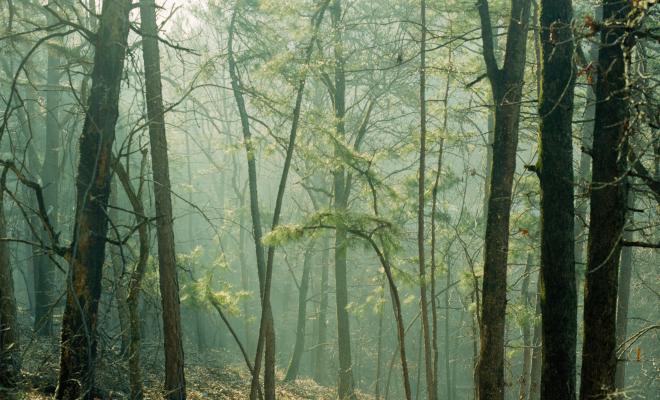03 Dec 2025
Summary
Woodlands once covered large parts of our country, but over the centuries they were chopped down. Now just 13% of the UK is covered in woodlands, compared to an EU average of 38%. We need to reforest the UK to tackle the climate and ecological crisis.
More street trees are also needed in urban areas to help provide cooling as the climate warms up. Councils are being encouraged to set a target for tree cover in urban areas, as part of the government’s Green Infrastructure Standards (more guidance will be published in 2023).
And there's a wealth of evidence that demonstrates the health benefits of trees and other wildlife.
In addition to planting lots of new trees, we need to protect existing ones – see our guide on Tree Preservation Orders.
And every community can play its part by doubling local tree cover, which is why it's one of the 50 actions in our Climate Action Plan for councils [PDF].
Your local council can play a key role in doubling tree cover. Councils collectively own 1.5 million acres of land in England and Wales and have planning powers to influence how land is used across your area.
Councils leading the way on tree planting include:
- Wirral Council, which plans to plant 210,000 additional trees by 2030.
- Leeds City Council, which is aiming to almost double tree cover in the area by 2050.
- Surrey County Council, which has developed a strategy for planting 1.2 million trees by 2030.
- Oxfordshire County Council, which is considering doubling tree cover by 2045.
Can you get your council to follow their lead?
What’s the level of tree cover in your area?
Friends of the Earth commissioned mapping experts Terra Sulis to produce a tree cover map of England (the data they needed to use sadly isn’t available for the rest of the UK yet).
The map identifies existing tree cover levels by council area and for neighbourhoods, and it also provides comparison data on similar areas.
Tree cover, which also includes street trees, is a measure of the total area of land covered by tree canopy (leaves, branches and stems).
The map also shows how much land might be available for planting of new woodlands, and what proportion of this "woodland opportunity" might be most suitable for adopting a rewilding approach.
The land identified as suitable for woodland excludes land that's high-quality farmland (grades 1-3a), peatland (because planting trees in peat releases more carbon than the trees would sequester) and land that's recognised as already important for wildlife. The proportion of this land that's suitable for rewilding is all within 150 metres of existing broadleaf woodland and therefore has a suitable seed source nearby (for example, jays have been shown to disperse seeds by 150 metres or more as they cache seeds for feeding on later, much like squirrels).
It's important that any land selected for tree planting is properly investigated through an ecological survey before starting, as some important habitats haven't yet been identified and protected.
While there are some resources that provide an estimate of tree cover in Wales and Northern Ireland, they don't map all trees – for example smaller areas or lone trees – and can be trickier to use.
How to engage your local councillors
Here are some key demands for councils:
- Announce a long-term goal to double tree cover.
- Carry out a survey to identify suitable locations for new trees, including street trees – particularly in neighbourhoods with below-average tree cover – hedgerows and new woodlands.
- Produce a comprehensive Trees and Woodland Strategy.
- Write to the government's Environment Secretary to request more funding for councils to grow and maintain trees.
Here are some ways you can ask your local councillors to increase tree cover in your area:
- Write to your local councillors asking them to plant more trees. Friends of the Earth’s report, "Why we need more trees in the UK", provides good arguments that you can use in your letter. Tell them about the new Trees and Woodlands Strategy Toolkit for Local Authorities, which sets out the steps councils can take to boost tree cover locally. You can also share our case study on what Wirral Council is doing to boost tree cover. Hackney Council is another example of an urban area leading the way on boosting wellbeing through tree planting.
- Remind them that it's also important to protect existing trees through proper care and watering after planting and ongoing maintenance of mature trees.
- Join up with other local community groups that want more trees. You could organise a joint petition or an event (for example, you could screen this series of great little videos about trees by TV presenter and historian Dan Snow).
- Ask your local councillors to introduce a council motion to double local tree cover.
- Organise a face-to-face meeting with your local councillor or councillor responsible for the environment to discuss a plan for increasing tree cover.
You can find lots of resources on how to campaign elsewhere on our website.
Good luck with your campaign for more trees – people and the planet will thank you for it!



